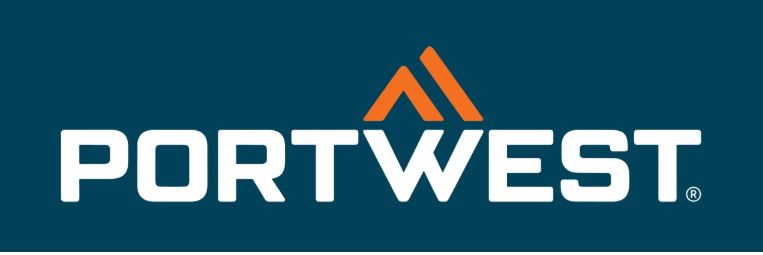
Semiconductor manufacturing represents one of the most technologically advanced and precision-critical industries in the world. In this ultra-clean, highly controlled environment, antistatic gloves for semiconductor manufacturing are not just recommended – they are absolutely essential for protecting multi-million-pound wafer lots from electrostatic discharge (ESD) damage. At Hall-Fast, we've been supplying premium Portwest ESD gloves to semiconductor facilities across the UK and internationally for nearly two decades, understanding the critical importance of static control in this demanding industry.
The Critical Role of Static Control in Semiconductor Manufacturing
Semiconductor manufacturing operates at the nanometer scale, where even the smallest electrostatic discharge can cause catastrophic damage. Modern semiconductor devices feature transistors measuring just a few nanometers, making them extraordinarily vulnerable to ESD events that would be insignificant in other industries. The implications of inadequate static control include:
Financial Impact
- Wafer scrapping - Complete loss of wafers valued at tens of thousands of pounds
- Yield reduction - Decreased production efficiency affecting profitability
- Rework costs - Time and resources spent on identifying and correcting ESD damage
- Equipment damage - Expensive manufacturing tools compromised by static discharge
- Reputation damage - Quality issues affecting customer relationships and market position
Technical Consequences
- Gate oxide breakdown - Permanent damage to MOSFET structures
- Junction damage - Altered electrical characteristics in diodes and transistors
- Metallization failure - Broken or weakened interconnect structures
- Latent defects - Components that pass initial testing but fail prematurely
- Process contamination - Static-attracted particles compromising clean room integrity
Understanding Semiconductor Manufacturing Environments
Semiconductor fabrication facilities (fabs) operate under extremely controlled conditions that place unique demands on antistatic gloves:
Cleanroom Classifications
Modern semiconductor fabs typically operate under ISO Class 1 or Class 10 cleanroom standards, requiring:
- Ultra-low particle generation - Gloves that don't shed fibers or particles
- Chemical compatibility - Resistance to acids, solvents, and cleaning agents
- Temperature stability - Performance across wide temperature ranges
- Ionic cleanliness - Minimal mobile ion content that could contaminate devices
Process-Specific Requirements
Different semiconductor processes demand specialized antistatic protection:
Wafer Fabrication
Front-end processes including photolithography, etching, and ion implantation require gloves with:
- Precision handling capabilities for delicate wafer manipulation
- Chemical resistance to process chemicals and photoresists
- Ultra-clean materials that won't contaminate critical surfaces
- Consistent ESD protection throughout the manufacturing sequence
Assembly and Test
Back-end processes including die attach, wire bonding, and packaging require:
- Enhanced dexterity for precise component placement
- Thermal stability for high-temperature processes
- Contamination control to prevent particle introduction
- Reliable grounding for consistent static dissipation
Quality Control and Inspection
Metrology and inspection operations demand:
- Tactile sensitivity for manual probing and handling
- Optical compatibility - materials that don't interfere with inspection systems
- Minimal outgassing to prevent contamination of sensitive equipment
- Consistent performance across multiple use cycles
Portwest Antistatic Gloves: Engineered for Semiconductor Excellence
Hall-Fast's comprehensive range of Portwest antistatic gloves has been specifically selected to meet the demanding requirements of semiconductor manufacturing environments.
Portwest Antistatic PU Fingertip Gloves
The Portwest Antistatic PU Fingertip Glove represents the pinnacle of precision for semiconductor applications:
Advanced Material Technology
- Conductive polyurethane fingertip coating provides superior static dissipation
- Seamless knit construction eliminates particle-generating seams
- Low-lint materials minimize contamination risk in cleanroom environments
- Chemical-resistant formulation withstands exposure to process chemicals
Performance Characteristics
- Surface resistance optimized for semiconductor ESD requirements
- Exceptional dexterity enabling precise wafer and component handling
- Consistent conductivity maintained throughout the glove's service life
- Comfortable fit reducing hand fatigue during extended operations
Portwest Antistatic PU Palm Gloves
For applications requiring broader palm coverage, the Portwest Antistatic PU Palm Glove offers:
Enhanced Protection Area
- Full palm conductivity for comprehensive static control
- Improved grip on smooth semiconductor surfaces and tools
- Moisture management preventing sweat-related conductivity variations
- Durability enhancement for high-volume manufacturing environments
Application Versatility
- Wafer cassette handling with secure grip and static protection
- Equipment maintenance combining protection with tool manipulation capability
- Material transport ensuring static-safe movement of sensitive components
- Quality inspection providing tactile feedback while maintaining ESD control
Portwest Antistatic Shell Gloves
The Portwest Antistatic Shell provides fundamental static control with semiconductor-specific benefits:
Core Static Protection
- Uniform conductivity throughout the glove structure
- Lightweight design for maximum dexterity and comfort
- Breathable construction managing moisture in controlled environments
- Cost-effective solution for high-volume glove usage
Cleanroom Compatibility
- Low particle generation meeting semiconductor cleanliness standards
- Chemical stability maintaining performance despite exposure to cleaning agents
- Static dissipative properties preventing charge accumulation during use
- Consistent quality across production lots for reliable performance
Portwest Vending Solutions
The Portwest Vending Antistatic PU Palm Glove addresses the unique distribution challenges of semiconductor facilities:
Efficient Distribution
- Vending machine compatibility for 24/7 availability in fabs
- Consistent packaging maintaining cleanliness until use
- Inventory management reducing administrative overhead
- Quality assurance ensuring every pair meets performance standards
Operational Benefits
- Reduced contamination through controlled dispensing
- Usage tracking for cost control and compliance monitoring
- Immediate availability preventing production delays
- Standardized quality across all shifts and production areas
Specialized Chemical Protection
For semiconductor processes involving aggressive chemicals, the Portwest ESD PVC Chemical Gauntlet provides:
Dual Protection Capability
- ESD control combined with chemical resistance
- Extended coverage protecting forearms during chemical handling
- Robust construction for demanding maintenance and cleaning operations
- Specialized applications in wet processing and chemical delivery systems
Technical Standards and Compliance in Semiconductor Manufacturing
Antistatic gloves for semiconductor manufacturing must meet stringent industry standards:
ESD Control Standards
ANSI/ESD S20.20 - The foundational standard for ESD control programs requiring:
- Surface resistance measurements between 10^6 and 10^12 ohms
- Charge generation limits for materials and processes
- Grounding verification ensuring effective static dissipation
- Training requirements for personnel handling ESD-sensitive items
IEC 61340-5-1 - International standard specifying:
- ESD control program elements and implementation
- Personnel grounding requirements and testing procedures
- Packaging standards for ESD-sensitive devices
- Audit protocols for program compliance verification
Semiconductor Industry Specific Standards
JEDEC Standards - Developed by the semiconductor industry for:
- Human body model (HBM) testing simulating direct handling ESD
- Machine model (MM) testing for equipment-generated static discharge
- Charged device model (CDM) testing for device-to-device ESD events
- Classification levels defining sensitivity thresholds for different devices
SEMI Standards - Equipment and materials standards covering:
- Cleanroom compatibility for materials and equipment
- Chemical resistance requirements for process environments
- Particle generation limits for consumable materials
- Safety requirements for personnel protection equipment
Cleanroom Protocols and Glove Selection
Contamination Control Hierarchy
Semiconductor cleanrooms operate under strict contamination control protocols:
Particle Control
- Glove material selection - Low-shedding materials preventing particle generation
- Surface treatments - Coatings that minimize particle attraction and release
- Packaging systems - Clean packaging maintaining glove integrity until use
- Disposal protocols - Proper removal preventing contamination spread
Chemical Compatibility
- Process chemical resistance - Compatibility with acids, bases, and solvents
- Cleaning agent tolerance - Stability when exposed to cleanroom detergents
- Outgassing control - Minimal volatile compound release
- Surface energy optimization - Reducing attraction of airborne contaminants
Performance Monitoring and Quality Assurance
Effective semiconductor operations require continuous monitoring of antistatic glove performance:
Electrical Testing
- Surface resistance measurement using calibrated test equipment
- Charge decay testing verifying static dissipation rates
- Breakdown voltage testing ensuring insulation integrity where required
- Conductivity mapping checking uniform electrical properties
Physical Property Testing
- Tensile strength evaluation ensuring mechanical durability
- Puncture resistance testing verifying protection against sharp objects
- Flex fatigue testing simulating repetitive use conditions
- Chemical resistance validation confirming compatibility with process chemicals
Advanced Semiconductor Applications
Emerging Technology Challenges
Next-generation semiconductor technologies present unique challenges for antistatic protection:
Advanced Node Manufacturing
- Sub-5nm processes requiring ultra-precise static control
- 3D device structures demanding careful handling of complex geometries
- New materials including high-k dielectrics and alternative channel materials
- Extreme ultraviolet lithography with heightened sensitivity to contamination
Compound Semiconductors
- Gallium arsenide processing with specific chemical compatibility requirements
- Silicon carbide handling demanding enhanced thermal resistance
- Indium gallium arsenide requiring specialized contamination control
- Gallium nitride with unique electrostatic sensitivity profiles
Advanced Packaging Technologies
- Through-silicon vias requiring precise alignment and handling
- Wafer-level packaging with increased static sensitivity
- System-in-package assembly demanding multi-material compatibility
- Heterogeneous integration combining diverse device technologies
Process-Specific Considerations
Photolithography Operations Critical photolithography steps require antistatic gloves with:
- Photoresist compatibility - Materials that won't contaminate or interact with resists
- UV stability - Resistance to degradation under lithography lighting
- Particle control - Ultra-low shedding to prevent defect generation
- Chemical inertness - No interaction with developers or strippers
Plasma Processing Etching and deposition processes demand gloves offering:
- Plasma resistance - Stability under plasma exposure conditions
- Temperature cycling - Performance across process temperature ranges
- Chemical compatibility - Resistance to fluorine and chlorine-based chemistries
- Static control - Consistent performance in ionized environments
Ion Implantation High-energy ion processes require specialized protection:
- Radiation resistance - Stability under ion beam exposure
- Vacuum compatibility - Low outgassing in high-vacuum environments
- Temperature stability - Performance during high-temperature annealing
- Contamination prevention - Ultra-clean materials preventing dopant cross-contamination
Hall-Fast: Two Decades of Semiconductor Industry Excellence
Since our founding as a family business in August 2006, Hall-Fast has built an unparalleled reputation in the semiconductor industry through our commitment to quality, innovation, and customer service.
Industry Recognition and Awards
Our excellence in serving the semiconductor industry has been recognized through numerous industry awards for international trade and business achievement. These accolades reflect our:
- Technical expertise in understanding complex semiconductor requirements
- Quality commitment ensuring consistent product performance
- Innovation leadership in identifying and supplying cutting-edge solutions
- Customer service excellence providing responsive support to critical operations
Comprehensive Product Portfolio
Beyond antistatic gloves, Hall-Fast offers complete semiconductor facility solutions through our extensive Portwest workwear range:
Complete ESD Protection Systems
- ESD clothing for comprehensive static control
- Portwest footwear with ESD properties
- Portwest accessories including wrist straps and heel grounders
- Disposable clothing for cleanroom applications
Specialized Hand Protection
- Chemical resistant gloves for wet processing areas
- High performance gloves for equipment maintenance
- Specialist gloves for unique applications
- Cleanroom disposables for single-use operations
Global Reach with Local Expertise
While we serve semiconductor facilities worldwide, Hall-Fast maintains deep understanding of regional requirements:
- UK semiconductor industry - Supporting facilities from Scotland to the South Coast
- European compliance - Understanding of EU regulations and standards
- International standards - Compliance with global semiconductor industry requirements
- Local support - Responsive service addressing urgent facility needs
Innovation and Continuous Improvement
Our commitment to the semiconductor industry extends beyond product supply:
- Technology monitoring - Tracking emerging requirements and challenges
- Product development - Working with manufacturers to enhance capabilities
- Application engineering - Providing technical support for complex applications
- Training programs - Educating customers on best practices and new technologies
Best Practices for Antistatic Glove Implementation
Selection Criteria for Semiconductor Applications
Choosing the right antistatic gloves requires careful consideration of multiple factors:
Process Requirements
- Static sensitivity levels - Matching glove properties to device requirements
- Chemical exposure - Ensuring compatibility with all process chemicals
- Temperature conditions - Selecting materials stable across process ranges
- Precision requirements - Balancing protection with dexterity needs
Facility Considerations
- Cleanroom classification - Meeting particle and contamination standards
- Production volume - Selecting cost-effective solutions for high-use applications
- Inventory management - Optimizing stock levels and distribution systems
- Quality systems - Ensuring traceability and performance documentation
Implementation Protocols
Successful antistatic glove programs require comprehensive implementation:
Training and Education
- Proper donning techniques - Preventing contamination during glove application
- Inspection protocols - Identifying defects and wear patterns
- Performance monitoring - Regular testing and verification procedures
- Incident response - Protocols for handling ESD events and glove failures
Quality Control Systems
- Incoming inspection - Verifying glove properties before use
- Performance testing - Regular validation of electrical and physical properties
- Failure analysis - Understanding and preventing glove-related issues
- Corrective actions - Systematic approach to addressing performance problems
Future Directions in Semiconductor Antistatic Protection
Emerging Technologies and Requirements
The semiconductor industry continues to evolve, driving innovation in antistatic protection:
Nanotechnology Integration
- Conductive nanofibers - Enhanced conductivity with improved comfort
- Smart materials - Self-monitoring capabilities for real-time performance feedback
- Advanced coatings - Multi-functional surfaces combining protection properties
- Responsive polymers - Materials that adapt to environmental conditions
Industry 4.0 Integration
- IoT connectivity - Gloves with embedded sensors for performance monitoring
- Data analytics - Predictive maintenance and optimization algorithms
- Automated quality control - Real-time testing and validation systems
- Digital traceability - Complete lifecycle tracking and documentation
Sustainability Initiatives
- Recyclable materials - Environmentally responsible disposal options
- Extended service life - Durable materials reducing replacement frequency
- Reduced packaging - Minimizing waste in distribution systems
- Sustainable manufacturing - Environmentally conscious production processes
Next-Generation Semiconductor Challenges
Advancing semiconductor technology presents new challenges for antistatic protection:
Quantum Computing - Ultra-sensitive devices requiring exceptional static control Photonic Integration - Combined electronic and optical systems with unique requirements Flexible Electronics - Conformable devices demanding specialized handling protocols Bioelectronics - Medical device applications requiring biocompatibility
Conclusion: Securing Semiconductor Manufacturing Excellence
Antistatic gloves for semiconductor manufacturing represent a critical investment in product quality, manufacturing yield, and business success. The semiconductor industry's relentless drive toward smaller geometries, higher performance, and increased integration makes proper static control more important than ever.
Hall-Fast's comprehensive range of Portwest antistatic gloves provides the precision, protection, and reliability that semiconductor manufacturers demand. From ultra-precise fingertip coatings for delicate wafer handling to robust chemical-resistant options for process support, our solutions address the full spectrum of semiconductor manufacturing requirements.
Our nearly two decades of experience serving the semiconductor industry, combined with our commitment to innovation and quality, makes Hall-Fast the ideal partner for your antistatic protection needs. As a proud family business that has given back to the community throughout our growth, we understand the importance of long-term partnerships and sustainable business practices.
The future of semiconductor manufacturing depends on continuous advancement in all aspects of production, including static control. Hall-Fast remains committed to supporting this evolution through innovative products, technical expertise, and unwavering dedication to customer success.
For detailed information about our complete range of antistatic gloves and semiconductor-specific solutions, visit our contact page or explore our comprehensive brands catalog. Learn more about our company history and values on our about page, and discover how we've built our reputation for excellence over nearly 20 years of industry leadership.
At Hall-Fast, we're proud to serve the global semiconductor industry with the expertise, innovation, and dedication that has made us a trusted name in professional protective equipment. Whatever your semiconductor manufacturing needs, we have the solutions and support to help you achieve excellence.
Hall-Fast - Whatever Your Industry Needs Worldwide!












